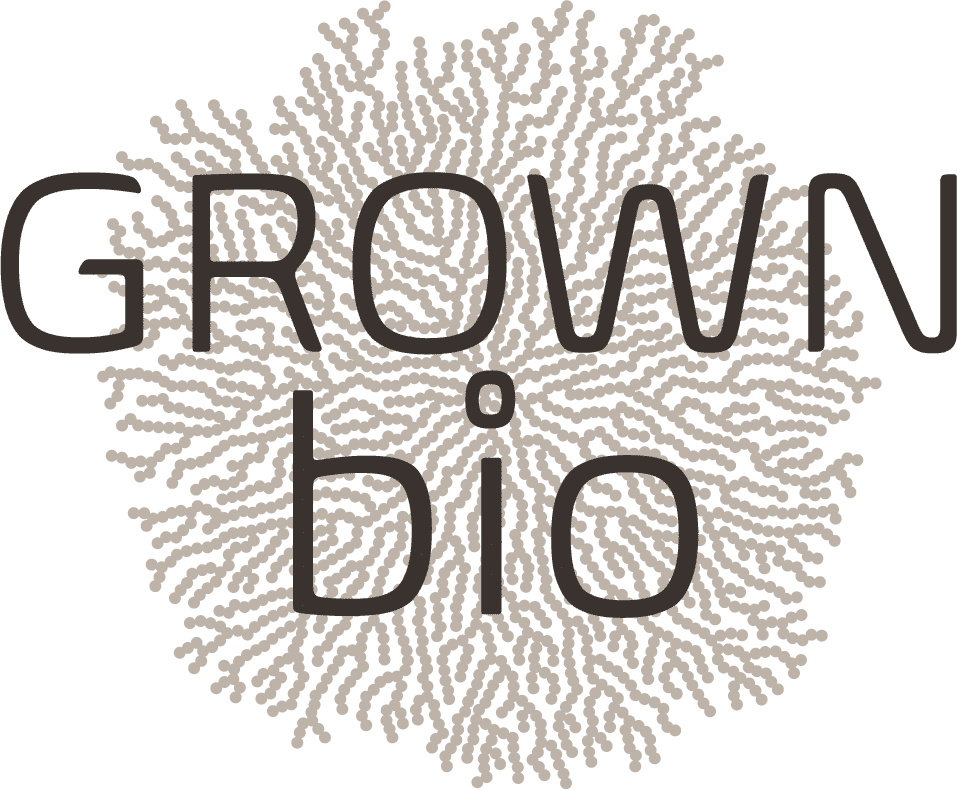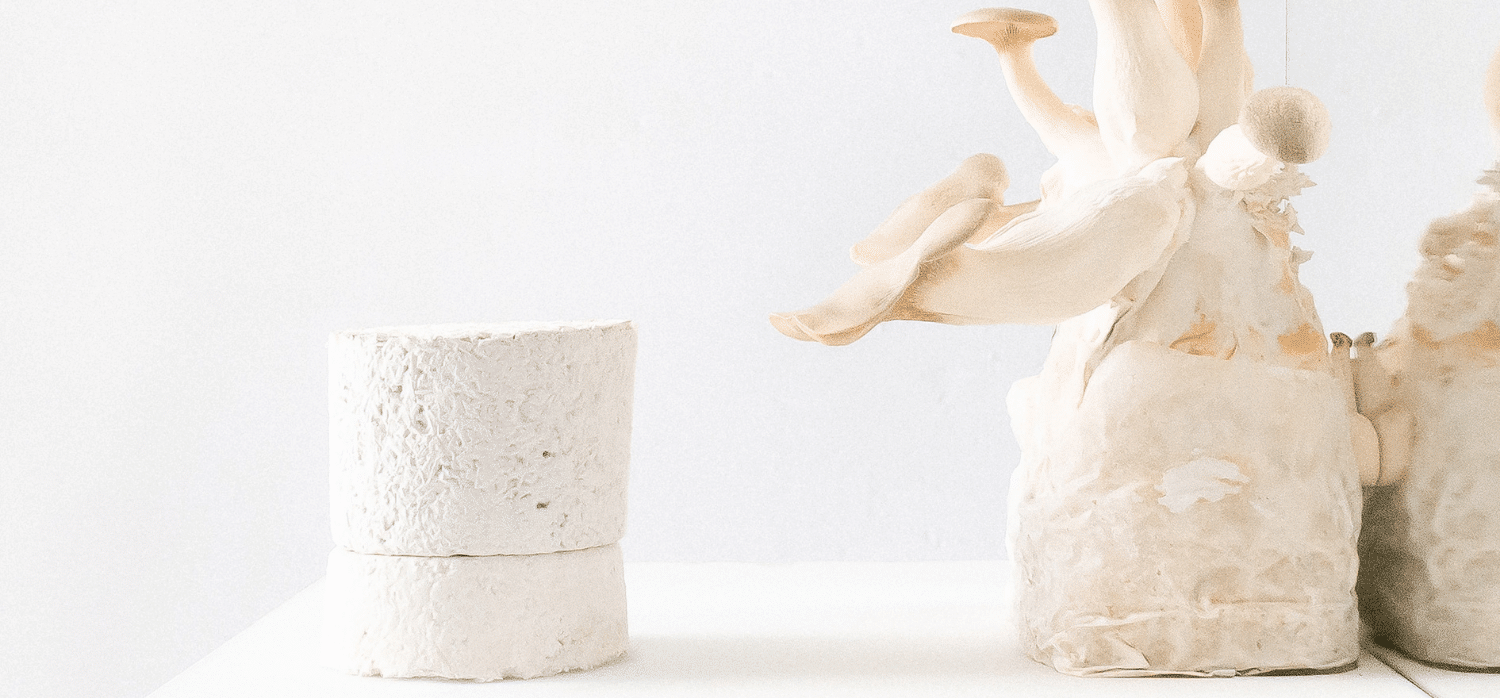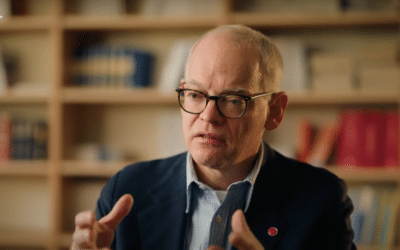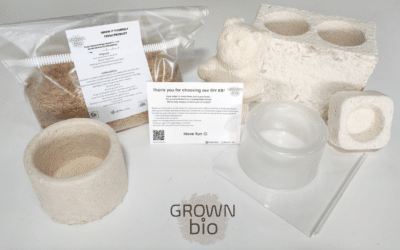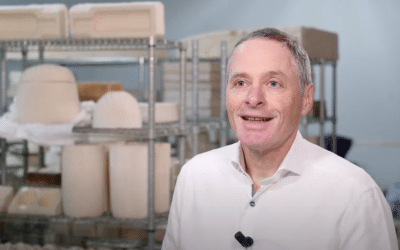Discovering the World of Fungi
Mycelium is a remarkable material the world is only recently getting to know. Simply said, it is the root structure of fungi, versatile and fascinating, and essential to the functioning of life on Earth. For a better understanding, we’ll explain the entire lifecycle of a mushroom.
When you sketch a mushroom, you’ll probably draw a stem and a cap. Underneath the cap there are spores. When the mushroom must reproduce, it will let go of these spores. They are taken by the wind and land on soil in the forest for example. When they touch the ground, the spores become active and create a network of white roots. Like a big plate of spaghetti, but underground. That’s Mycelium.
It is quite strong and grows fast. When the Mycelium has been growing underground for a while, new mushrooms will pop out of the ground. And the cycle will start again.
And the best part about is, that it can be used to create a variety of sustainable products. In this blog post, we will explain why it is a game-changer.

Fungi and their Power of Recycling
Fungi are amazingly diverse, with over 1.5 million species known to us. Although we have only scratched the surface of their vast existence, fungi can be found almost everywhere.
Fungi are living organisms, but not like humans, animals or plants, they even have their own ‘kingdom’.
However, just like other organisms, they need energy, water and oxygen. The energy is taken from organic waste streams, which they find in nature. Fungi have a very wide ‘menu list’ because they can take energy from many sources. This is why they are exceptional recyclers, playing a vital role in breaking down and reusing organic materials.
Fungi often form a network called mycelium, made up of interconnected cells called hyphae. This web-like structure spreads throughout its environment, breaking down food with enzymes and absorbing nutrients. In doing so, fungal networks help bind soil and transform organic matter, contributing to the cycle of life. Actually, the mycelium does even more: researchers have found that mycelium also functions as an underground communication system for plants and trees.

The Versatile Properties of Mycelium
In nature, the Mycelium lives, breathes, and grows. It does so by finding nutrients in the soil. In our factory, we try to replicate this process. We use waste fibres or hemp as a nutrient and mix the mycelium with it. The mycelium feeds itself and grows, binding all the fibres together. This can happen randomly, but if you make a growth form, it will take the shape of that. By doing so, we can make things in certain shapes. When it has grown into the shape we want, we bake it off in an oven to kill the Mycelium and then you have a very strong & unique product. But not only that, it is also 100% home and marine compostable, which means it leaves zero waste behind and is far superior to harmful materials like styrofoam or other single-use plastics. Furthermore, the recycling process for Mycelium products is incredibly convenient. Unlike other sustainable options, it doesn’t require a big recycling machine. Instead, Mother Nature effortlessly takes care of it through natural means.
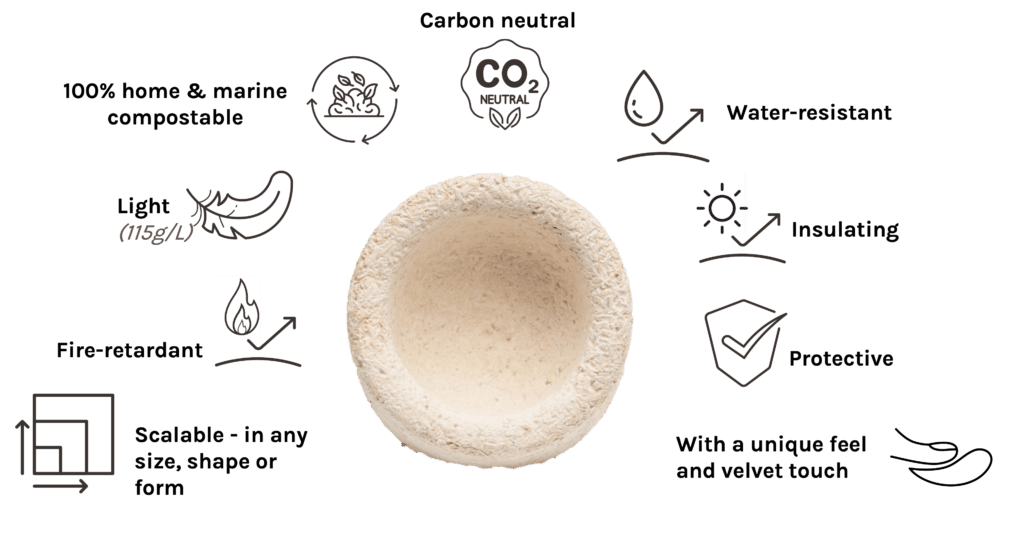
You want to find out and try it yourself? With our easy-to-use instructions & GIY kits, anyone can experiment with this innovative material and bring their design dreams to life. People make beautiful things. We see people growing helmets, candles, artistic sculptures, and much more. It’s fascinating to see all those great ideas. If you cant to learn more about our packaging solutions, send us a mail.
The Future of Sustainability
By using the potential of mycelium, the ultimate sustainable material, we can pave the way for a truly sustainable and promising future for generations to come.
Whether you’re a conscious consumer seeking sustainable alternatives, an innovative designer, or simply someone who wants to make a positive impact on the planet, Mycelium is a material that should definitely be on your radar.
It may just hold the key to a brighter, more sustainable future.
Mycelium asserts itself through many advantages
Manufacturing companies rely on sustainable packaging solutions to continuously improve their environmental balance. One point that plays an essential role here is the material used. Mycelium is considered a sustainable and simultaneously environmentally friendly solution that promises many advantages. For one, it can be produced in a resource-saving manner; for another, the production of mycelium does not require much energy. This aspect makes the material future-proof. Another point in favor of mycelium is the low CO2 emission produced during its manufacture. But mycelium is not only convincing from the beginning of the production process.
Diverse application potential characterizes mycelium
Even the finished packaging made from mycelium does not need to hide from other materials. One point that makes the material the ideal basis for packaging is its low weight. This can save unnecessary shipping costs. Additionally, mycelium scores with good insulation properties, making it also suitable for shipping more sensitive goods. When the packaging is no longer needed, it can be easily composted. It is completely biodegradable. Thus, elaborate recycling processes are unnecessary. Mycelium is a biomaterial with enormous application potential.
What products can be packaged with mycelium?
The use of mycelium as a base material is possible on many levels. As packaging material, it is particularly suitable for the safe shipping and transportation of household appliances and consumer electronics, but also for cosmetics and spare parts for vehicles or electrical devices. Even candles of any shape and size, as well as fragile glass products, are protected by mycelium as well as dishes and products of the heating industry.
